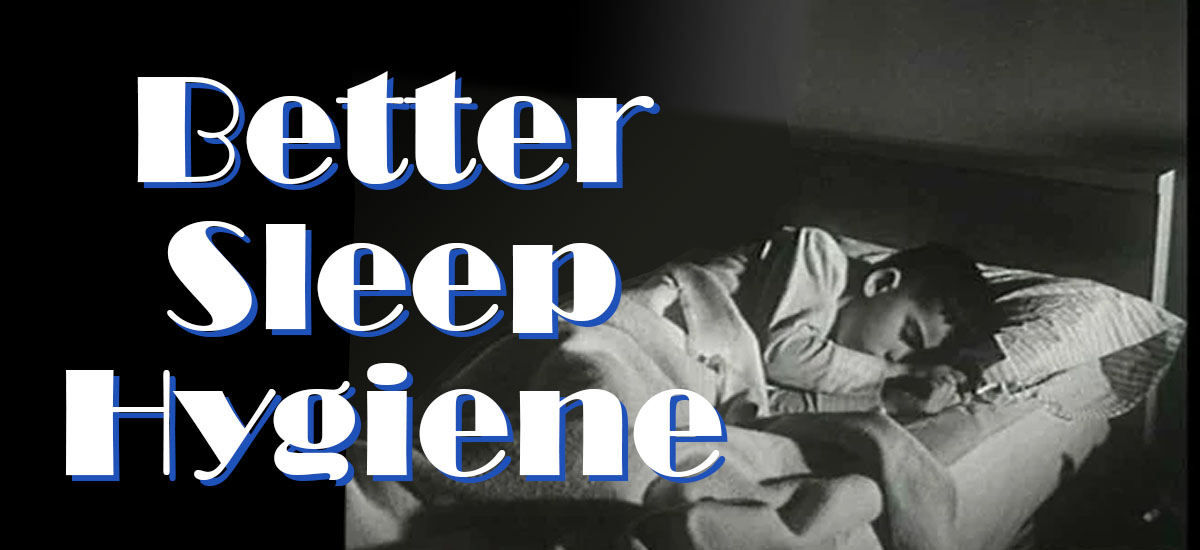

Better Sleep Hygiene
By David “Nick” Top Jr., PhD
Published May 27, 2021
Sleep Hygiene
Sleep is an important biological function. According to the National Sleep Association, it is recommended that young adults get between 7-9 hours of sleep per night. Online learning and remote work have had both positive and negative effects on student sleep habits. For example, one study found that college students studying from home during stay-at-home orders were able to get an additional 30 minutes of sleep per night, on average, and 92% of students got at least 7 hours of sleep, up from 84% (Wright et al., 2020). However, people reported having poorer quality sleep and more difficulty falling asleep despite spending more time in bed (Blume et al., 2020). This post is going to provide some evidence-based tips for having a good night’s sleep.
- Avoid caffeine, alcohol, nicotine, and other chemicals that interfere with sleep for at least 6 hours before going to bed.
- Set a consistent bedtime every night.
- Wake at the same time every morning.
- Do not take naps during the day; if you need to take a nap, make sure it is no longer than 20 minutes. Taking naps throughout the day reduces the amount of sleep pressure that is needed to go to bed at.
- Have a pre-sleep ritual. (Brushing teeth, changing into sleep wear, dimming the lights, doing a calming activity, etc.). This will help your body wind down for the day to prepare for sleep.
- Use the bed only for sleep or sex. Avoid doing homework, watching tv, or using your phone in bed. This will help your body learn to prepare for sleep when you are in bed.
- If you are unable to go to sleep within 15-20 minutes, get out of bed and do a relaxing activity for 15-20 minutes before trying again. Again, we are trying to teach the mind that the bed is only for sleeping (and sometimes sex); its not for laying awake wondering when you will fall asleep.
- Take a warm bath or shower 1-2 hours before bed. Your body produces melatonin (the sleep hormone) when it detects a temperature drop in your environment and taking a shower before bed is a great way to get this process started.
- Keep your room a constant temperature. Around 65 degrees Fahrenheit is ideal for most people. You can keep it 2-3 degrees cooler or hotter depending on your preferences. Studies have shown that the temperature of the room is one of the most important factors of quality sleep (Obradovich et al., 2017; Okamoto-Mizuno & Mizuno, 2012).
- Keep the bedroom dark. Having a dim yellow light (night light) in one part of the room is okay. However, keep blue or green light (common light from screens) out of the bedroom, as they can decrease melatonin production, making it more difficult for you to fall asleep (Tähkämö et al., 2019).
- Eat a light snack (not a meal or anything heavy) before bed. It’s hard to sleep when your tummy is grumbling.
- Do relaxing activities and turn off screens for 20-30 minutes before bed. There is about a 15 minute delay between when you turn screens off and when your melatonin is released (Tähkämö et al., 2019).
- Use relaxation or breathing techniques before bed. If your body is relaxed, you mind
is likely to be relaxed also. Here are some exercises you can use while trying to
fall asleep.
- How to do Progressive Muscle Relaxation
- 5 minutes of mindful breathing meditation
If your sleep quality does not improve after following these tips, you may want to seek professional medical help. There are effective treatments for sleep disorders that can drastically improve the quality of sleep, and thus your quality of life.
Here is a worksheet that you can use to help track your use of these sleep tips.
References
Blume, C., Schmidt, M. H., & Cajochen, C. (2020). Effects of the COVID-19 lockdown on human sleep and rest-activity rhythms. Current Biology, 30(14), R795–R797. https://doi.org/10.1016/j.cub.2020.06.021
Obradovich, N., Migliorini, R., Mednick, S. C., & Fowler, J. H. (2017). Nighttime temperature and human sleep loss in a changing climate. Science Advances, 3(5). https://doi.org/10.1126/sciadv.1601555
Okamoto-Mizuno, K., & Mizuno, K. (2012). Effects of thermal environment on sleep and circadian rhythm. Journal of Physiological Anthropology, 31(1), 14. https://doi.org/10.1186/1880-6805-31-14
Tähkämö, L., Partonen, T., & Pesonen, A.-K. (2019). Systematic review of light exposure impact on human circadian rhythm. Chronobiology International, 36(2), 151–170. https://doi.org/10.1080/07420528.2018.1527773
Wright, K. P., Linton, S. K., Withrow, D., Casiraghi, L., Lanza, S. M., Iglesia, H. de la, Vetter, C., & Depner, C. M. (2020). Sleep in university students prior to and during COVID-19 Stay-at-Home orders. Current Biology, 30(14), R797–R798. https://doi.org/10.1016/j.cub.2020.06.022

